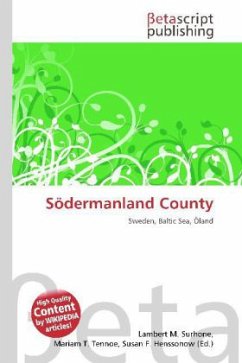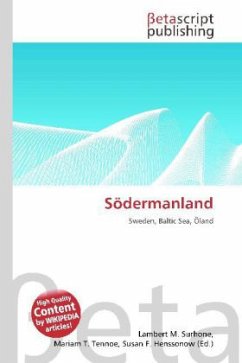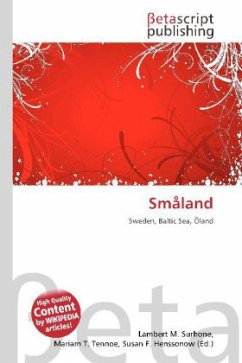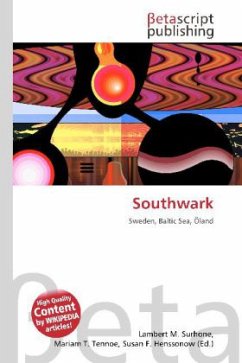
Södertörn
Versandkostenfrei!
Versandfertig in 6-10 Tagen
23,99 €
inkl. MwSt.

PAYBACK Punkte
12 °P sammeln!
Please note that the content of this book primarily consists of articles available from Wikipedia or other free sources online. Since 2005, the whole of Södertörn has been included in Greater Stockholm. Before that, the southern parts of the peninsula, which lie within Nynäshamn municipality, and the western parts, which are in Södertälje were not part of Greater Stockholm. The northern areas of Södertörn are to a large extent made up of rift-valley countryside (and urban areas) with high ground which is either pine forest or bare. The long valleys of the south become level ground, whil...
Please note that the content of this book primarily consists of articles available from Wikipedia or other free sources online. Since 2005, the whole of Södertörn has been included in Greater Stockholm. Before that, the southern parts of the peninsula, which lie within Nynäshamn municipality, and the western parts, which are in Södertälje were not part of Greater Stockholm. The northern areas of Södertörn are to a large extent made up of rift-valley countryside (and urban areas) with high ground which is either pine forest or bare. The long valleys of the south become level ground, while those in the north contain salt water. The bedrock is almost entirely gneiss. The peninsula''s name (á Taurinum in 1225, Tør in 1283, a Tørinne in 1383 and eventually Södertörn'''' since 1645) derives from the Old Norse dialect word tor, meaning "broken rocky beaches", which cut deep into the coast of Södertörn.












